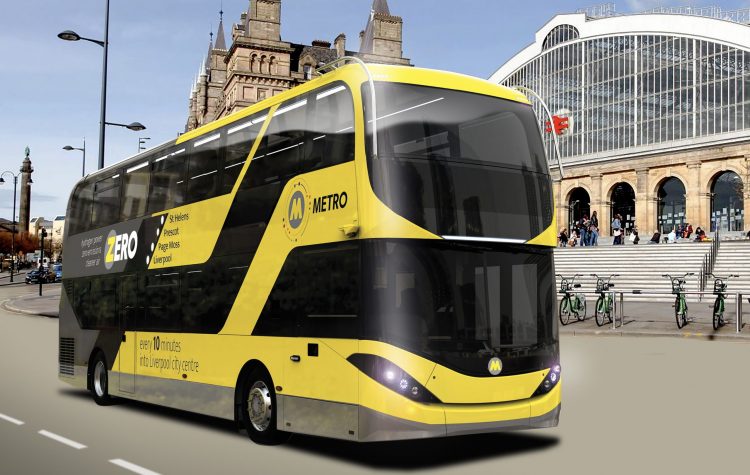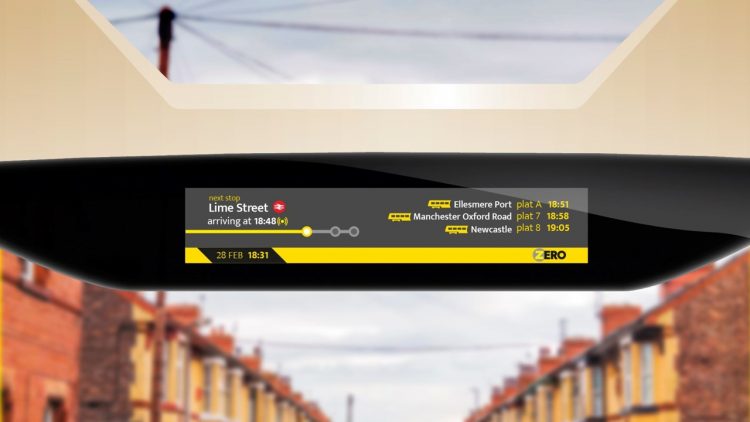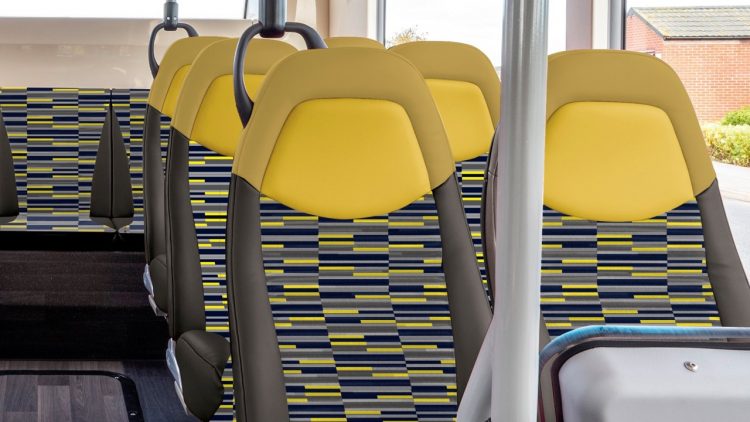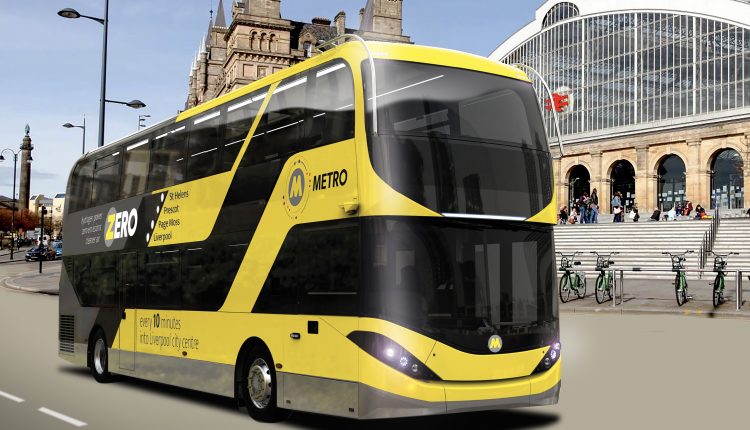Hydrogen buses could be carrying passengers in Liverpool city region by the end of 2022 but question marks remain over how much carbon will initially be saved. Tony McDonough reports

Images of the interior of Liverpool city region’s new fleet of hydrogen-powered buses have been released and the vehicles could be in service by the end of 2022.
However, Liverpool City Region Combined Authority (CA), which is purchasing the vehicles, has not yet revealed details of who will supply the hydrogen. How the hydrogen is produced is critical to how much carbon is saved.
Costing £12.5m, the 20-strong hydrogen bus fleet is being built by Alexander Dennis (ADL). The money is coming from the city region’s Transforming Cities Fund. ADL will deliver the first vehicles later this year and they could be in operation by Christmas.
They will initially operate by both Arriva and Stagecoach on the 10A between St Helens and Liverpool city centre. This is the region’s busiest route. Full roll-out is not expected until around spring 2023.
A facility for ‘filling up’ the buses with hydrogen will be located in St Helens. On Wednesday the CA told LBN that it wasn’t yet ready to announce details of who will supply the hydrogen – or how it would be produced. It said further details are likely to be released in the coming weeks.
While a hydrogen vehicle itself may be emissions-free, how the hydrogen is produced is the bigger question. More specifically, is it ‘grey’, ‘blue’ or ‘green hydrogen’?
In terms of cutting carbon emissions, green hydrogen is the best option. It is produced via a process called electrolysis powered by renewable energy such as wind or solar. However, green hydrogen is not currently produced on a large scale and is therefore very expensive. It is unlikely this will be an option for the CA in the short to medium term.
Grey hydrogen is produced using natural gas and therefore causes significant carbon emissions. Blue hydrogen is seen as the most viable option as a bridge to green hydrogen.
It is produced in the same way as grey hydrogen but the emissions are captured and stored rather than being released into the atmosphere.
Blue hydrogen is not emissions-free. Critics question the reliability of carbon capture and storage on a large scale. Some also claim it is an excuse to extend the use of fossil fuels.
It is the preferred option of the multi-billion pound HyNet project which will supply hydrogen to factories across the North West by around 2025. The hydrogen will be produced at Essar Oil UK’s Stanlow oil refinery at Ellesmere Port. The carbon will be captured and stored in empty natural gas caverns under the Irish Sea.
New CGI visuals offer a glimpse of how the city region buses will look inside. They will feature larger and more comfortable seats with unique pattern designs, just as on the new trains for the Merseyrail network.
Interiors will be decorated with a skyline frieze featuring iconic landmarks such as the Royal Liver Building, the Dream in St Helens and Anthony Gormley’s Another Place in Sefton.


They will also carry a range of special features passengers said that they wanted to see onboard. These include wireless and USB phone charging, internet access and reading lights above seats.
The buses will also be some of the most accessible in the country. They will offer increased capacity for wheelchair users and passengers with prams or buggies.
Other new features of the hydrogen buses include camera wing mirrors to improve safety, as well as audio and visual announcements for next stops. High definition onboard screens will update passengers on journey progress in real time. They will also display information about onward connections as the vehicles approach train and bus stations.
Metro Mayor Steve Rotheram said: “I’ve got bold ambitions for the future of our region’s bus network and where better to start than bringing the fleet into the 21st century? We’ve made a major investment and I think it really shows; they look great.
“Our new zero-emission hydrogen buses will not only give passengers a clean, green and comfortable way to get about, but they will also act as the trailblazer in our city region’s journey to develop one of the country’s healthiest public transport networks.

